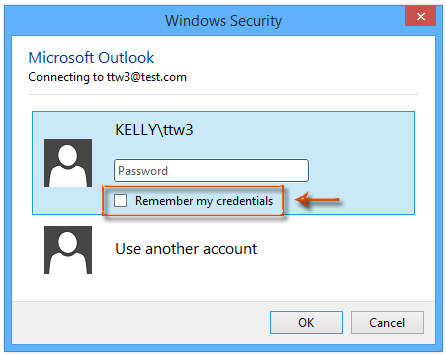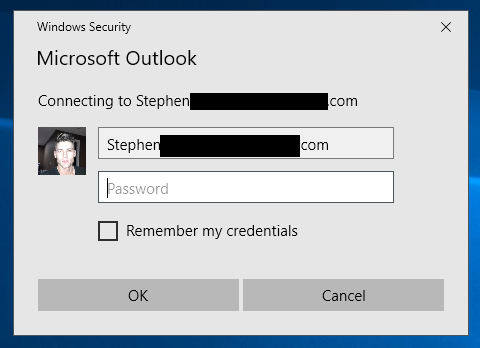

- #MICROSOFT OUTLOOK 2016 KEEPS PROMPTING FOR PASSWORD PASSWORD#
- #MICROSOFT OUTLOOK 2016 KEEPS PROMPTING FOR PASSWORD WINDOWS#
It represents a GUID (for example, c3 d1 9a 7b 80 1b c4 4a 96 0a e5 b6 3b f9 7c 7e). Under the \0000000x subkey, locate the Service UID binary value. For example, the Account Name value points to under the \00000003 subkey.

Repeat this process until you find the Account Name value that includes your SMTP address. Select the first subfolder (00000001), and then examine the data of the Account Name binary value by double-clicking the value.

Under the 9375CFF0413111d3B88A00104B2A6676 key, you see a subkey for each account in your profile. Under this subkey, locate and expand the name of your Outlook profile. HKEY_CURRENT_USER\Software\Microsoft\Windows NT\CurrentVersion\Windows Messaging Subsystem\Profiles HKEY_CURRENT_USER\Software\Microsoft\Office\15.0\Outlook\Profiles Locate the registry path appropriate for your version of Outlook:
#MICROSOFT OUTLOOK 2016 KEEPS PROMPTING FOR PASSWORD PASSWORD#
If you're prompted for an administrator password or for confirmation, type the password, or click Allow.
#MICROSOFT OUTLOOK 2016 KEEPS PROMPTING FOR PASSWORD WINDOWS#

On the Logon network security list, select Anonymous Authentication, and then click OK.Ĭlick Next, click Finish, and then click Close on the Account Settings dialog box.Ĭlick Close on the Mail Setup dialog box, and then click OK to close the Mail control panel. In the Microsoft Exchange dialog box, select the Security tab. In the Change Account dialog box, click More Settings. Select your email account, and then click Change. In Control Panel, locate and double-click Mail.Ĭlick Show Profiles, select your Outlook profile, and then click Properties. Or, type control panel at the Start screen, and then tap or click Control Panel in the search results.


 0 kommentar(er)
0 kommentar(er)
